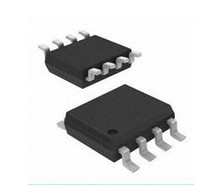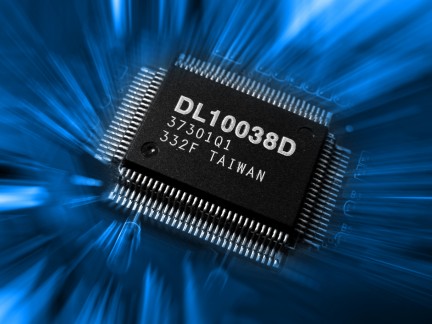Read Only Memory (ROM) Types
There are five basic ROM types:
- ROM - Read Only Memory
- PROM - Programmable Read Only Memory
- EPROM - Erasable Programmable Read Only Memory
- EEPROM - Electrically Erasable Programmable Read Only Memory
- Flash EEPROM memory
Each type has unique characteristics, but all types of ROM memory have two things in common:
Data stored in these chips is non-volatile -- it is not lost when power is removed.
Data stored in these chips is either unchangeable or requires a special operation to change.
ROM

A diode normally allows current to flow in only one direction and has
a certain threshold, known as the forward breakover, that determines
how much current is required before the diode will pass it on. In
silicon-based items such as processors and memory chips, the forward
breakover voltage is approximately 0.6 volts.
By taking advantage of the unique properties of a diode, a ROM chip
can send a charge that is above the forward breakover down the
appropriate column with the selected row grounded to connect at a
specific cell. If a diode is present at that cell, the charge will be
conducted through to the ground, and, under the binary system, the cell
will be read as being "on" (a value of 1).
Iif the cell's value is 0, and there is no diode link at that
intersection to connect the column and row. So the charge on the column
does not get transferred to the row.
The way a ROM chip works necessitates the programming of complete
data when the chip is created. You cannot
reprogramme or rewrite a standard ROM chip. If it is incorrect, or the
data needs to be updated, you have to throw it away and start over.
Creating the original template for a ROM chip is often a laborious
process.
Once the template is completed, the actual chips can cost as little as a
few cents each. They use very little power, are extremely reliable and,
in the case of most small electronic devices, contain all the necessary
programming to control the device.
PROM
Creating ROM chips totally from scratch is time-consuming and very
expensive in small quantities. For this reason,
developers created a type of ROM known as programmable read-only memory
(PROM). Blank PROM chips can be bought inexpensively and coded by
the user with a programmer.
PROM chips have a grid of columns and rows just as ordinary ROMs do.
The difference is that every intersection of a column and row in a PROM
chip has a fuse connecting them. A charge sent through a column will
pass through the fuse in a cell to a grounded row indicating a value of
1. Since all the cells have a fuse, the initial (blank) state of a PROM
chip is all 1s. To change the value of a cell to 0, you use a
programmer to send a specific amount of current to the cell. The higher
voltage breaks the connection between the column and row by burning out
the fuse. This process is known as burning the PROM.

PROMs can only be programmed once. They are more fragile than ROMs. A
jolt of static electricity can easily cause fuses in the PROM to burn
out, changing essential bits from 1 to 0. But blank PROMs are
inexpensive and are
good for prototyping the data for a ROM before committing to the costly
ROM fabrication process.
EPROM
Working with ROMs and PROMs can be a wasteful business. Even though
they are inexpensive per chip, the cost can add up over time. Erasable
programmable read-only memory (EPROM) addresses this issue. EPROM chips
can be rewritten many times. Erasing an EPROM requires a special tool
that emits a certain frequency of ultraviolet (UV) light. EPROMs are
configured using an EPROM
programmer that provides voltage at specified levels depending on the
type of EPROM used.
The EPROM has a grid of columns and rows and the cell at each
intersection has two transistors. The two transistors are separated from
each other by a thin oxide layer. One of the transistors is known as
the floating gate and the other as the control gate. The floating gate's
only link to the row (wordline) is through the control gate. As long as
this link is in place, the cell has a value of 1. To change the value
to 0 requires a
process called Fowler-Nordheim tunneling.
Tunneling is used to alter the placement of electrons in the floating
gate. Tunneling
creates an avalanche discharge of electrons, which have enough energy to
pass
through the insulating oxide layer and accumulate on the gate electrode.
When
the high voltage is removed, the electrons are trapped on the electrode.
Because
of the high insulation value of the silicon oxide surrounding the gate,
the
stored charge cannot readily leak away and the data can be retained for
decades. An electrical charge, usually 10 to 13 volts, is applied to the
floating gate. The charge comes from the column (bitline), enters the
floating gate and drains to a ground.

This charge causes the floating-gate transistor to act like an electron
gun. The excited electrons are pushed through and trapped on the other
side of the thin oxide layer, giving it a negative charge. These
negatively charged electrons act as a barrier between the control gate
and the floating gate. A device called a cell sensor monitors the level
of the charge passing through the floating gate. If the flow through the
gate is greater than 50 percent of the charge, it has a value of 1.
When the charge passing through drops below the 50-percent threshold,
the value changes to 0. A blank EPROM has all of the gates fully open,
giving each cell a value of 1.
To rewrite an EPROM, you must erase it first. To erase it, you must
supply a level of energy strong enough to break through the negative
electrons blocking the floating gate. In a standard EPROM, this is best
accomplished with UV light at a
wavelength of 253.7 nanometers (2537 angstroms). Because this particular
frequency will not penetrate most plastics or glasses, each EPROM chip
has a quartz window on top of it. The EPROM must be very close to the
eraser's light source, within an inch or two, to work properly.
An EPROM eraser is not selective, it will erase the entire EPROM. The
EPROM must be removed from the device it is in and placed under the UV
light of the EPROM eraser for several minutes. An EPROM that is left
under too long can become over-erased. In such a case, the EPROM's
floating gates are charged to the point that they are unable to hold the
electrons at all.
EEPROMs and Flash Memory
Though EPROMs are a big step up from PROMs in terms of reusability,
they still require dedicated equipment and a labor-intensive process to
remove and reinstall them each time a change is necessary. Also, changes
cannot be made incrementally to an EPROM; the whole chip must be
erased. Electrically erasable
programmable read-only memory (EEPROM) chips remove the biggest
drawbacks of EPROMs.
In EEPROMs:
- The chip does not have to removed to be rewritten.
- The entire chip does not have to be completely erased to change a specific portion of it.
- Changing the contents does not require additional dedicated equipment.
Instead of using UV light, you can return the electrons in the cells of
an EEPROM to normal with the localized application of an electric field
to each cell. This erases the targeted cells of the EEPROM, which can
then be rewritten. EEPROMs are changed 1 byte at a time, which makes
them versatile but slow. In fact, EEPROM chips are too slow to use in
many products that make quick changes to the data stored on the chip.
Manufacturers responded to this limitation with Flash memory, a type of
EEPROM that uses in-circuit wiring to erase by applying an electrical
field to the entire chip or to predetermined sections of the chip called
blocks. This erases the targeted area of the chip, which can then be
rewritten. Flash memory works much faster than traditional EEPROMs
because instead of erasing one byte at a time, it erases a block or the
entire chip, and then rewrites it.
The electrons in the cells of a Flash-memory chip can be returned to
normal ("1") by the application of an electric field, a higher-voltage
charge.



































